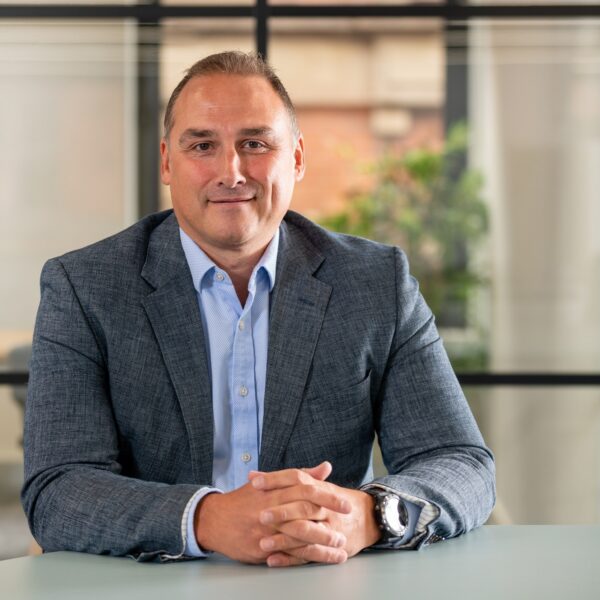News
Rising to the challenges to create Manchester’s first healthcare helipad
22 Oct 2021

Jon Parry
Director
Earlier this year, we were proud to facilitate the delivery of a brand-new helipad and 130m link bridge for the Manchester Royal Infirmary (MRI), which created a 24-hour access primary helicopter landing site – the first of its kind in central Manchester.
The new facilities will afford vastly improved patient transfer, assessment and treatment times with the helipad being located within the Oxford Road Campus.
The helipad is located on the seventh floor of Grafton Street’s multi-storey car park and links, via high-level rooftop link bridge corridor, to the MRI, including the Royal Manchester Children’s Hospital, St Mary’s and the Royal Eye Hospital.
Operating under Perfect Circle’s unique collaboration, we were appointed by the Manchester University NHS Foundation Trust to provide project management services for the complex and challenging £7.5m scheme.
The complex engineering and construction of the link bridge, helipad and interfaces into the existing car park and hospital building were all undertaken while maintaining all clinical and support services with the car park and all hospital areas remaining live at all times.
Jon Parry, Operations Director at Pick Everard, said: “We are extremely proud to have delivered this scheme, which will secure faster and more effective transfers for critically ill patients and help to save more lives.
“Ensuring specialist facilities like helipads are incredibly important in urban areas like Manchester where secondary sites are not in close proximity to the hospital. Getting patients to the treatment wards as quickly as possible by cutting down on transfer time will ultimately help to reduce instances of death, disability and suffering.”
Previously, the cluster of central Manchester hospitals did not have their own landing facility and had to rely on a secondary landing site in a nearby park, which could only receive patients during the day due to insufficient lighting provision.
Patients being transported by air ambulance would have to complete the final mile of their journey by land ambulance, adding further risk to the patient through additional time and handling.
From a general construction perspective, multiple measures had to be taken to avoid noise and vibration for patients and staff in the wards below the development work as the helipad was built and the associated lift extension. The dust from construction work can also cause issues when breathed in by patients – especially those with respiratory problems like those on the wards in question – so practical measures were made on sealing features such as windows.
The bridge installation saw sections roughly the size of a lorry being lifted into place. Through close consultation with the Trust, it was decided that every time a lift was to take place that the wards would be decanted as a precautionary safety measure for patients. Restrictions were also implemented to ensure that nobody could gain access to restricted spaces during lifts, with people on guard as additional precaution.
Jon continued: “Logistically, all of the above was difficult – especially managing patient movement and lifts during the winter while the hospital was facing winter bed pressures. Our priorities lay with ensuring patients received the excellent standard of care required, and that healthcare provision faced as little disruption as possible.
“Of course, this was further exacerbated during the project lifecycle as COVID-19 hit. This project was identified as a critical health project and should continue work on site, so close collaboration with all parties was critical given ever-changing guidance. As the first wave of infections hit, the wards immediately below the development work were identified as COVID wards, which meant we could no longer move patients around and a plethora of new safety measures needed to be introduced to continue work safely.”
Other elements of the scheme included the need to divert traffic onto the busiest bus route in Europe, which required heavy and clear signposting and changes to the car park number plate recognition software. This was prioritised to ensure that road and car park users did not incur any road fines due to the traffic flow changes.
Jon concluded: “Supporting the NHS and healthcare clients with the delivery of expert services and developments is something that we pride ourselves on at Pick Everard, having the ability to rise to the complex challenges that they bring. Our highly skilled team are equipped to do just this across all of our disciplines and will continue to support the delivery of excellent healthcare throughout the country through our work.”
Healthcare
We have worked with more than 50 NHS trusts, charities and private organisations providing healthcare services on the full range of projects.
